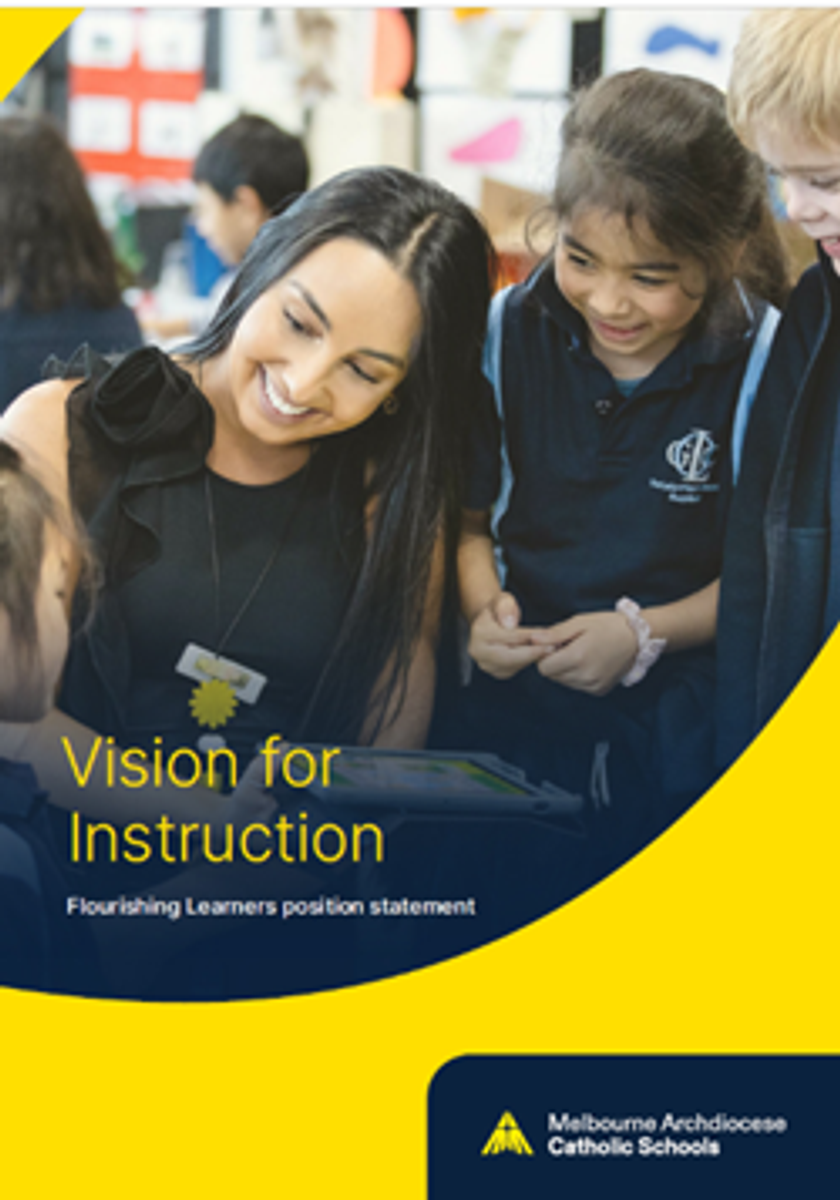MACS Flourishing Learners - Vision for Instruction

At St. Mark's, we are committed to using research-based teaching methods that support effective learning for all students. The preferred approach to achieving teaching and learning excellence is found in the Explicit instruction sequence:
Starting with the introduction of new content and skills, effective teaching will generally follow this sequence:
• Explicit instruction: Teachers fully explain the concepts and skills that students are required to learn. The most efficient way to teach knowledge is to teach it explicitly, and this is particularly true for the introduction of new concepts (Rosenshine 2012). However, this does not mean students are passively receiving information.
• Modelling: Effective teachers break down what students need to learn into smaller learning outcomes and model each step so that students can see what is expected of them (Rosenshine 2012).
• Guided practice: Teachers provide multiple opportunities for students to practise, and support is gradually removed as students develop understanding and can work more independently.
• Independent practice: Once students have developed understanding, teachers ask students to complete tasks themselves while the teacher monitors and provides feedback.
Formative assessment: Effective questioning is a core part of effective formative assessment. Instruction is most effective when it is highly interactive with frequent checks for understanding. Identifying where a student is in their learning by assessing what they know also helps teachers choose the right starting place before introducing a new unit of work (AERO 2021).
Regular review: Rehearsing and reviewing information creates stronger connections and makes prior knowledge more readily available for use. As a part of a routine, use low- or no-stakes quizzes for frequent review. Material that is practised and discussed in review will be easier to recall. If students are struggling with a concept during review, teachers can do a quick re-teach lesson.
THE WHAT: This week we bring you the final two of the seven ‘How students Learn’ statements and their implications for teaching and learning instruction.
How students learn | Implications for instruction |
| Knowledge builds on knowledge. Knowledge is mental Velcro (Hirsch 1996) – students who have lots of knowledge about topics across the curriculum find that new knowledge ‘sticks’ to it, building understanding from one year level to the next. | Teaching a knowledge-rich curriculum is essential to creating life-long learners with opportunity-rich lives (Wexler 2020). Carefully sequencing knowledge across the whole curriculum will deepen student learning. |
| Novices and experts learn differently. Novice learners process information differently as they do not yet have the mental models that experts do. | Introduce new ideas carefully and explicitly. When students attain a reasonable level of expertise in a subject, they should practise and extend their learning effectively through independent problem-solving. |
At St. Mark's, the Daily Review consolidates students’ understanding and develops their fluency in essential understandings for literacy and numeracy sessions. It also ensures that students have the prerequisite skills for the day’s lesson. The Daily Review adds to students’ confidence by ensuring that previously taught skills and concepts are reviewed in a sequenced and planned way. The Daily Review should be delivered for approximately 15 to 20 minutes just prior to the Teacher Presentation.

